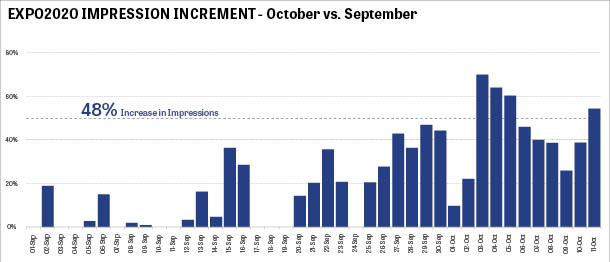In May 2021, we woke up to the shocking news that the president of Geopath, Kim Frank, had resigned after a heated discussion with OAAA’s newly appointed CEO Anna Bager.
Kim had been leading Geopath (the industry standard for the OOH marketplace in the US) for more than six years, with exceptional milestones and achievements. That was until recently, when complaints from industry stakeholders started pouring in, accusing Geopath of a lack of agility and low speed of responsiveness to the results of mobility and traffic shifts following Covid-19 lockdowns.
How does your adtech look for 2022? No matter what stage your planning is at, our final Online Briefing of the year has you covered. Join us on November 29 for Adtech Playbook – A Roadmap to Superior Performance. Find out more here.
This also came with increased pressure from Bager on Geopath to adopt a more “dynamic” measurement system for the OOH industry. Anna, who joined OAAA (the OOH Advertising Association of America), bringing extensive experience in measurement from her previous role as the executive vice-president of the Internet Advertising Bureau (IAB), was pursuing her vision of moving the OOH industry towards an impression-based measurement system that will provide “forecasted and reconciled-as-delivered daily impressions”, allowing OOH metrics to be part of the broader media measurement ecosystem.
Anna won on what came to be known as the ‘coup by Anna’ and got the support of the industry stakeholders for impression-based measurement and standardisation.
Lessons learned here: The future of OOH measurement relies on a system that meets advertisers’ need for real-time metrics that quantify exposure to OOH formats. These metrics need to be comparable to existing currencies used for other media such as TV, radio or digital. Measurability is the only way to strengthen OOH’s position as an integral part of the media mix.
Back to our part of the world: We believe that now is the time we start engaging in such conversations. It is time we shifted the discussion from, for example, questioning the effectiveness of a hoarding versus a bridge on Sheikh Zayed Road, to asking questions such as ,‘What is the increment in impressions on the roads leading to Expo 2020 in October vs. September?’ (Around +48 per cent in October, by the way), or questions such as, ‘How did the change in mobility trends affect OOH’s effective cost per thousand impressions (CPM) due to Expo 2020?’
We cannot be standing still when we are in the business of delivering ads to people on the move.
We are not that far behind, and we believe that now more than ever the market is ready for such discussions, and here are four reasons why:
1 Advertisers are demanding visibility on planning and measurement. Beyond premium locations, cool executions and 3D installations, we are seeing a growing need from advertisers for increased transparency and dynamic measurement. In the last three months alone, we have seen demand from advertisers in the telecommunications, finance, entertainment, device technology and e-commerce industries for data-driven planning to guide their OOH investments.
2 Advertisers are looking for a fraud-free, brand-safe, highly viewable, unskippable, no-blocking medium as an alternative to digital and social media, and outdoor is best positioned to answer those requirements.
3 With the investments in DOOH and state-of-the-art installations that we are witnessing in Riyadh, Jeddah and Dubai, suppliers have an objective to democratise OOH, so the channel becomes accessible to all clients, not only to those with high budgets. The market is also witnessing a surge in adtech platform integrations (DSPs, SSPs and audience platforms), spurring the industry’s growth in this space.
4 Media suppliers are recognising the need for in-house data and analytics talent; we are seeing big players in the GCC invest in talent acquisition and data departments.
On our side, at Seventh Decimal, we have weighed in heavily on research around impression-based measurement over the past year. We introduced our Opportunity To See (OTS) metric through Streach in September, which is in line with global initiatives around impressions-based measurability.
We also launched our DOOH solution within our pre-campaign and post-campaign Streach modules, enabling advertisers and suppliers to plan and measure on viewable impressions per creative, rather than served impressions, for the first time in our region, bringing DOOH a step closer to a scalable and accountable programmatic ecosystem.
We remain focused on our vision to be the technology backbone that standardises, automates and induces transparency in the OOH marketplace in the region.
Measurement will have a massive impact on everything we do as an industry, but we have to be ready to embrace it. The technology is here; the stakeholders are ready; the infrastructure is evolving. We need to ensure that the industry understands the research, adopts it and recognises its value. Every stakeholder has a role to play, and we believe that we owe it to this medium to make it happen, as eventually we cannot be standing still when we are in the business of delivering ads to people on the move.











